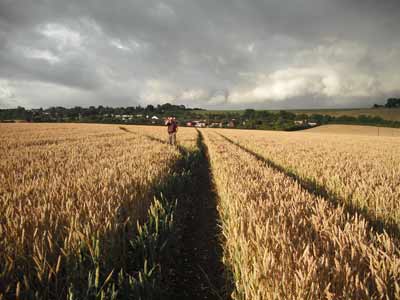My English teacher in the sixth form introduced me to ‘only connect’ — the famous E.M.Forster quotation — not the addictive BBC4 quiz show with Victoria Coren (although the latter is inspired by the former). The implications of those two words have made a lasting impression on me.
Actually, the quotation (from Howard’s End) is elaborated into a longer phrase that has a more specific literary meaning than the more common interpretations of its first two words: ‘Only connect the prose and the passion, and both will be exalted, and human love will be seen at its highest.’
However, I prefer to apply the phrase to connections in the more general sense — specifically creating or uncovering connections between often surprising subjects, which is what the quiz programme is all about. It’s also how the brain works at the most fundamental level — thoughts being the result of connections between synapses and neurons (yes, I did have to check that on Wikipedia).
Consequently, there’s a large school of thought that suggests creativity and innovation are largely the product of making connections between unlikely ideas — and that the more original the idea the more unusual and hidden is the connection between the two.
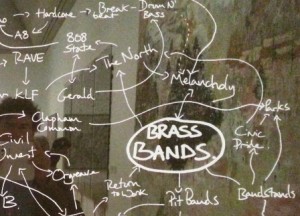
Much narrative is driven by the dissonance (and consequent creation of connections) between two (or more) ostensibly opposing situations or premises — vampires or wizards exist in the modern world, what if historical events had turned out differently, someone new comes to town (especially if it’s an alien or werewolf) and so on. Metaphor and simile, which are ways of making surprising connections, are the wellspring of imaginative writing.
And all love stories are fundamentally about creating of connections between two people — and the more unlikely the better. This is the premise of my novel: two people from very different backgrounds and who thought they wanted very different things happen to meet and they connect — although how intimately and lastingly is for the reader to discover.
The novel also connects the conflicting lifestyles of City financiers and bohemian artists, inner-city London and the bucolic English countryside and the aesthetic pleasures of art with the sensual satisfaction of food.
I also like to think Forster’s maxim works at the subconscious level too — that all the experiences you have and the information you absorb get filed away in your memory somewhere and start to connect and form new ideas without any conscious effort.
This might be why a common piece of writing advice is to put a notepad by the bed to capture the seemingly random pieces of imagination or association that sometimes surface in the transition between sleep and wakefulness. I’ve almost trained myself to slumber into this semi-conscious state when commuting on the train — and I’ve often emailed myself ideas or phrases that seemed worth noting and might have been forgotten otherwise.
It’s not ‘write what you know’ but I’m of the belief that the more experience and information you use to fertilise your mind then the more chance there is of all those neurons and synapses bearing fruit with some connections that are really interesting.
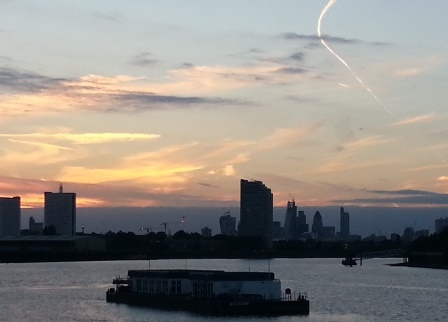
By contrast, I sometimes wonder what the sort of writer who lives like a hermit finds to write about — are they constantly drawing on childhood experiences or perhaps they find enough inspiration from secondary sources?
However, having had a ‘day job’ that’s delivered me into central London for a few years, I’ve tried to take the opportunity to load up my own brain cells. I’ve tried to do something new every day if work time and the weather have allowed. (On a warm summer day I’ve taken advantage of the nearby park and laid out on the grass for half an hour — rationalising I’m letting ideas subconsciously ferment!)
Of course, it’s not necessary to go to London to load up your brain cells but there’s so much (often free) access to huge sources of cultural stimulation that it’s very easy to do so. When the weather’s not been kind enough for sunbathing — oops I mean meditating — then I’ve met up with friends or taken myself off on walks or lunchtime visits to of museums and galleries.
I recently discovered the charming Geffrye museum in Hoxton, which is particularly atmospheric when its living rooms through the ages are decorated for Christmas. Only last week I viewed the National Gallery’s side-by-side Van Gogh’s Sunflowers exhibition and it cost nothing to do so. (Jeremy Deller’s Acid Brass, mentioned above, is also free as part of the Tate Britain’s Walk Through British Art exhibition).
There are also the many special exhibitions held at the various galleries — I visited the Richard Hamilton exhibition at the Tate Modern last week in its first couple of days and before any reviews had been published, which made them all the more interesting when I read them.
I should make particular mention of the brilliant Only in England photographic exhibition in its last few weeks at the Science Museum. It features Tony Ray-Jones’s spontaneous pictures of English eccentricity (I’m desperate to find a print of the Whitstable Bay lovers on the boat trip) along with Martin Parr’s poignant photographs of isolated 1970s Yorkshire communities (actually near Hebden Bridge — not far from where I was brought up).
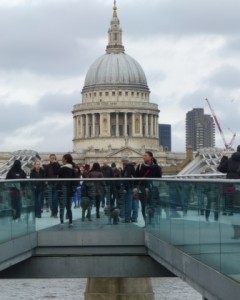
And with two thousand years of recorded history, London itself is full of connections between old and new, especially in the areas around the City and the East-End and docklands — with possibly the best example the fabulous Millennium Bridge creating a spectacular connection between St. Paul’s Cathedral (which occupies a very ancient site) with the Tate Modern building, an icon of post-industrial transformation and one of the largest-scale examples of how artists have taken over what were once resolutely functional and non-decorative buildings and neighbourhoods (see forthcoming post).
While I like the serendipity of walking aimlessly around the city, I’ve also used various books of guided walks to explore areas I’d never routinely visit. Steven Millar’s two volumes of London’s Hidden Walks have been particularly inspiring. I’ve wandered with his books in hand around Soho, St. James’s, Marylebone, Clerkenwell, the City, Temple, Westminster, Chelsea and Covent Garden.
I’ve also explored areas further off the beaten track like Whitechapel, Lambeth and Vauxhall (where I discovered the fascinating enclave around Bonnington Square Garden), Rotherhithe and Deptford (see the spectacular view in the photograph above).
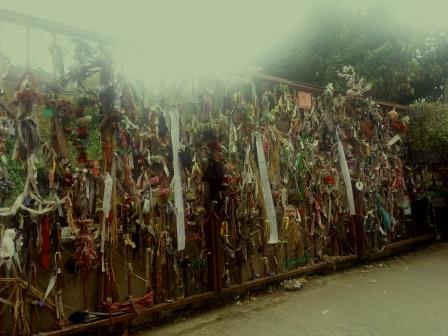
One of the most poignant sites I’ve discovered while walking around London was on the walk around the South Bank and Southwark. The site of the Crossbones Graveyard contains the unmarked graves of 15,000 children and prostitutes — those who for hundreds of years until the mid-nineteenth century weren’t considered worthy of a burial inside the boundaries of the grounds of the Winchester Palace and Southwark Cathedral . The graveyard’s existence was only discovered when the Jubilee Line was constructed in the 1990s. It has now become a shrine for modern day sex workers — with memorial ribbons tied to the gates. It’s still a derelict site owned by London Transport and campaigners are trying to resist development plans and preserve the area as a memorial.
In common with others I’ve found wandering London, it’s a touching and surprising story and will lodge in my mind for a long time. In years to come, might the memory of this walk randomly cross-fertilise with some snatch of conversation, a recalled art exhibition or museum exhibit — and out of my subconscious might emerge some original idea or compelling concept might bubble its way out of my subconscious? Who knows? In any case, it’s great reward in itself to cram all this material in my mind in the first place.
UPDATE 9th March 2014: A photographer I met at The Other Art Fair last year, Maria Konstanse Bruun (who’s from Norway but based in the UK) posted this article on her Facebook page. It’s from the Huffington Post and is a list of the 18 behaviours that apparently mark out creative people from others. I certainly recognise many in myself: daydreaming, observing people, liking solitude, seeking out new experiences (see the above post), losing track of time and, of course, ‘connecting the dots’. It’s well worth a read.

